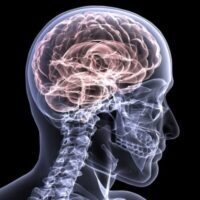Concussed athletes walk slower than non-concussed athletes during cognitive-motor dual-task assessments but not during single-task assessments 2 months after sports concussion: a systematic review and meta-analysis using individual participant data.
Büttner F, Howell DR, Ardern CL, Doherty C, Blake C, Ryan J, Catena R, Chou LS, Fino P, Rochefort C, Sveistrup H, Parker T, Delahunt E. Br J Sports Med. 2019 Jul 22. pii: bjsports-2018-100164. doi: 10.1136/bjsports-2018-100164. [Epub ahead of print] Review.
https://bjsm.bmj.com/content/early/2019/07/22/bjsports-2018-100164
Take Home Message
Dual-task walking tests (use of a cognitive task during walking) identify gait deficiencies after the usual clinical concussion recovery timeline (7-10 days) and help evaluate recovery after a sports concussion.
Summary
Clinicians have an array of tools to diagnose a concussion, including patient-reported symptoms, neurocognitive testing, and static postural balance. The accuracy of these tests to detect lingering deficits decreases as time passes after an initial injury. One solution may be a dual-task test, which mimics real life or athletic demands by requiring someone to perform a motor and cognitive task simultaneously. However, we lack large studies to help us learn how long these deficits last after an injury. Hence, the authors conducted a systematic review and meta-analysis using data for each participant in the studies to determine if patients after a concussion exhibit gait disturbances compared to non-injured participants. The researchers included studies if they had both participants with and without a concussion, a simple walking or static balance task paired with a cognitive task, and outcome variables related to gait biomechanics or balance. They then contacted the authors of each study to ask for the data from everyone in the published paper. The authors analyzed data for 516 participants with a concussion and 523 control participants from 26 eligible studies. Authors from 20 out of the 26 studies provided data for each participant. For the dual-task assessment protocols, only three studies used a static balance test for the motor task while most asked someone to walk at a self-selected pace on an 8 to 10 meter walkway. Among studies with data for each person, none of the participants performed a balance task. For the cognitive task, participants typically completed “question and answer” tasks (82% of studies). The authors found that participants with a concussion walked slower during single-task conditions up to one week after injury. During dual-task conditions, participants with a concussion had a decreased speed up to 2 months after the injury.
Viewpoints
The authors build on prior studies by showing that more complex tests, which stress multiple areas of the brain, may allow clinicians to understand how a patient is recovering after a concussion. While the authors found that several biomechanical parameters differed between participants with and without a concussion, they also noted that simply measuring walking time over a short distance while answering questions was enough to discern between groups. Additional validation in a clinical setting is necessary, but a test like this would be simple enough for clinicians to implement without bulky and expensive equipment. Because the differences were seen up to 2 months after injury, it suggests that athletes may not recover as quickly as previously thought and current clinical tests may fail to identify these differences. Despite insights from this study, the authors cautioned that they were unable to offer recommendations on which dual-tasks or measures to include in a clinical exam because of differences across studies. In the future, standardizing what outcomes are collected would make the dual-task test easier to implement into a clinical setting. Clinicians should be aware of the impairments in dual-task functioning after a concussion and how that may limit an athlete in their immediate return to sport and the months after an injury.
Question for Discussion
Should we implement dual-task testing at baseline concussion testing? What variables would you assess? What barriers are present to doing so besides time?
Written by: Karlee Burns
Reviewed by: Jeffrey Driban
Related Posts
Single or Dual Task For Concussion Assessment?
More is Better in Relation to Concussion Detection


I believe dual-task testing at baseline concussion testing should be implemented. Often throughout sport, we are multitasking and using our brains in multiple different areas to complete tasks and be successful. The amount of brain power that our athletes are required to use during the activities we are returning them to, should be assessed at baseline. Not just the simple act of recalling words without any distraction or other task to be completed as well. Implementing other decision making questions/task while using the motor cortex gives a better insight into how the athletes complete more complex tasks needed for their sport/activity.
Hi Briana, I definitely agree with you! It looks like that is what the current research is showing as well. Stressing multiple parts of the brain gives clinicians a better idea of what the athlete looks like when performing these more complex tasks. Nobody just walks in a straight line while doing nothing else! Having baseline measures would be a great first step in determining if they are still experiencing deficits post injury that other tests aren’t able to pick up on.
I agree with the previous comment that dual-task baseline testing should be implemented. However, I question if walking with some sort of cognitive assessment is the best measure when considering athletes. In sport, the activity taking place is typically more intense than walking so perhaps using running with a cognitive assessment or perhaps an even more sport-specific activity in combination with a cognitive assessment would be more accurate in determining any deficits. Overall, I think the idea of dual-task baseline concussion testing is a good idea but may have the greatest benefits if the activity used in testing is sport-specific.
If an athlete was diagnosed with a concussion and is now asymptomatic, is put through the return to play protocol, and begins normal sport activity again, are there still deficiencies in the athletes cognitive ability to perform?
It would be very interesting to see if there is a cognitive deficiency that would cause increased injury risk even after the athlete is returned to their respective sport.
That being said, in what ways could this change our return to sport protocol? What long term impacts would an increased return to play protocol have on our athletes?